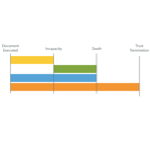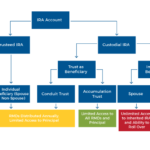
For most independent RIAs who want to manage client portfolios (and be compensated for doing so), having an independent RIA custodian to work with is a necessity. As in practice, RIA custodians not only actually hold client assets (an important consumer protection) but also provide the core technology platform to open client accounts, to make deposits into and withdrawals from those accounts, to keep track of and trade in client accounts, to bill advisory fees from client accounts, and to integrate client investment data to the advisor’s CRM and other key components of the advisor’s technology stack.
Because of the similarities in these core investment functions from one RIA custodial platform to another, though, it’s often hard to differentiate between them. And because RIA custodians make very little (and now, for many, absolutely nothing) from each trade in a client’s account, the businesses must operate with enormous volume to achieve the requisite economies of scale to be able to compete. Which in practice has led to a wave of RIA custodial consolidation in recent years, from E*Trade acquiring Trust Company of America (and then being acquired by Morgan Stanley), to TD Ameritrade acquiring Scottrade Advisor Services and then being acquired by Charles Schwab to form the largest RIA custodian that houses the majority of all RIA assets.
Yet in practice, while RIA custodians often seem substantively similar, there are differences from technology to service to culture. Such that the mega-merger of TD Ameritrade and Schwab in particular – two firms that in the past had very opposite approaches to technology and very different cultures – has left many RIAs (from those already at Schwab or especially TD Ameritrade, to those looking to form an RIA and decide on a custodian, or break away from a broker-dealer and get started with a new platform) wondering whether “Schwabitrade” is the right place to be in the future. And if not, where else to go and how else to choose between Schwabitrade, Fidelity, and a litany of mid-sized-to-smaller RIA custodial options available.
In this guest post, industry commentator Bob Veres shares his perspective on 5 of the “lesser-known” alternatives to Schwabitrade (and Fidelity) for RIA custodial services, including BNY Mellon’s Pershing Advisor Solutions and its “Menu of Models” approach, Shareholder Services Group’s (SSG) high-touch service approach for advisors with no AUM minimums, TradePMR’s custom-built advisor technology platform, SEI’s all-in-one investment platform for RIAs, and newcomer Altruist’s efforts to build a ‘next generation’ RIA platform unencumbered by the legacy constraints of today’s existing RIA custodians.
Ultimately, the reality is that Schwab is the dominant player in the marketplace because the RIA custodial model is one where size and scale matters, allowing the company to provide the widest breadth of services at the lowest cost (for “free”, as Schwab only makes money on clients’ underlying holdings and doesn’t charge advisors directly). Nonetheless, the reality is that like the financial advice business itself, one size rarely fits all, many clients (and their advisors) have unique needs that necessitate a more specialized solution… and many advisors still see the value in sometimes paying a little more in order to get the service and/or capabilities that are most meaningful for their RIA firm and the clients they serve.









